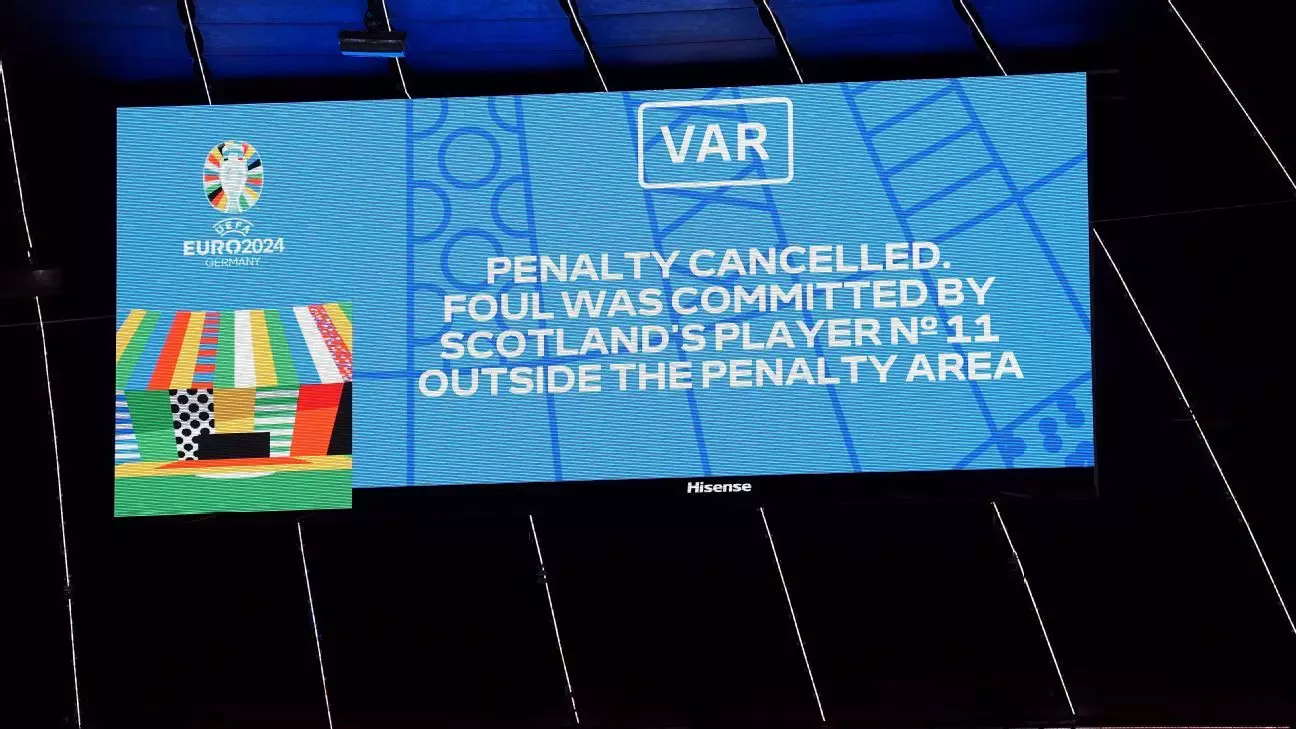In an essential shift for football officiating, the International Football Association Board (IFAB) has recently approved expanded trials for Football Video Support (FVS). This innovative alternative to the Video Assistant Referee (VAR) system was initially tested during the U20 and U17 FIFA Women’s World Cups earlier this year, sparking discussions about its feasibility as a cost-effective solution for lower-tier leagues. Unlike VAR, which relies heavily on an extensive camera network and a dedicated video assistant referee, the FVS system empowers coaches with the ability to challenge specific on-field decisions. This article will delve into the nuances of FVS, its operational mechanics, the potential challenges, and the broader implications for football governance.
Under the FVS system, coaches are granted up to two opportunities per match to contest decisions they believe to be incorrect. This contrasts sharply with the VAR model, where the review process is tightly controlled by video officials with full access to multiple camera angles. The FVS approach is designed specifically for leagues that may lack the resources needed for comprehensive VAR implementations, ideally functioning with only four cameras. For example, leagues like the Women’s Super League, where resources and facilities can vary greatly, stand to benefit from this coach-influenced review process.
Interestingly, this system does not aim to replicate VAR’s capabilities but rather to create a more straightforward and user-friendly alternative. According to Pierluigi Collina, chairman of FIFA’s referees’ committee, FVS is designed to operate in environments where video technology is limited. As such, this might mean that only “clear” offside occurrences can be identified, placing an increased burden on referees to make crucial decisions based on real-time assessments rather than relying solely on video evidence.
While the proposition of FVS appears promising, it is vital to acknowledge its inherent limitations. The reduced number of cameras means that the system will not have the same breadth of data as VAR, which has raised questions regarding its reliability in cases like offsides or other intricacies of the game. Collina emphasized the need for clarity in differentiating FVS from VAR, indicating that coaches’ expectations must be managed concerning what this system can achieve.
Moreover, one significant aspect of FVS is that the referee, after a coach makes a challenge, must autonomously review the play. This differs markedly from VAR, where exact guidance is provided about potential errors. The process focuses on the referee assessing the incident independently, which presents an interesting dynamic: it raises concerns around consistent decision-making and the interpretation of the “clear and obvious” error standard.
The introduction of FVS may signal a seismic shift in how matches are officiated, especially in leagues where technology remains a challenge. The flexible application of this system may invite broader participation from club officials, reducing the stigma and frustration sometimes associated with existing VAR protocols. Clubs around the world are being encouraged to participate in these trials, which could lead to a standardized approach to refereeing across various footballing contexts—even in less prestigious leagues.
Additionally, the discussions during the recent IFAB meeting highlighted other potential innovations, such as allowing only team captains to communicate with referees and limiting goalkeeper time on the ball to improve game flow. These conversations reflect a proactive stance toward evolving the laws of the game, indicating a willingness to adapt traditional processes for the modern era.
As trials for Football Video Support expand, the football community should attentively monitor this experiment. Its introduction stands to modernize officiating, particularly in resource-limited environments, while fostering a more interactive relationship between coaches, players, and referees. IFAB’s assessment of these trials will be crucial in determining future regulations and the overall trajectory of football officiating. The dynamic interplay of technology, communication, and decision-making heralds what could be a transformative chapter in football history. Although uncertainties remain, embracing such innovations could vastly improve the integrity and excitement of the game for all stakeholders involved.

